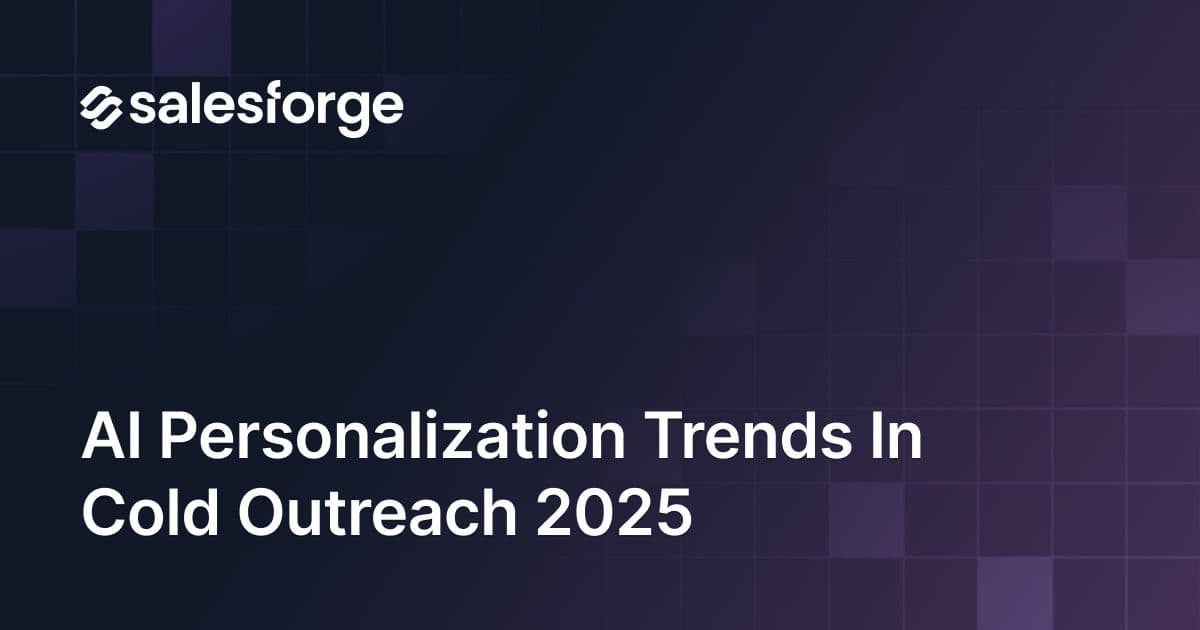The Best Day and Time to Send Cold Emails for Maximum Deliverability (2024)
This blog is for you if you're tired of sending cold emails that go unanswered…
Timing is everything in cold emailing. Get it right, and you could see a massive boost in open rates and replies. Get it wrong, and your emails might end up in the digital abyss.
It’s not just about what you say; it’s about when you say it.
The best time to send cold emails can make or break your campaign.
In this blog, I’ll share my expertise on the perfect time to send your emails so they stand out and get noticed.
We’ll cover the best days of the week and times of day to send your emails, factors that can affect your open rates, and tips to increase your reply rate.
If you skip this blog, you might keep sending emails at the wrong times, missing out on potential leads and opportunities.
Let's dive in!
What is the Best Day of the Week to Send Cold Emails?
Studies suggest that timing is everything when it comes to cold emailing. Let’s dive into what we have observed testing and trying thousands of cold emails.
Generally, the best days to send cold emails are Tuesdays, Wednesdays, and Thursdays.
Here's a breakdown:
- Tuesdays: People are typically back in the office routine after the weekend and are more likely to check their emails.
- Wednesdays: The middle of the week, often a productive day for many professionals.
- Thursdays: A good day to catch people before the weekend rush.
Our findings show that emails sent on Tuesday have a 20% higher open rate. Thursday isn’t far behind, making it another strong contender.
These days, people are settled into their workweek, but not yet overwhelmed.
Weekday vs. Weekend
Now, let’s compare weekdays and weekends. Weekdays are generally better for sending cold emails. People are more likely to check their emails during work hours. This increases the chances of your email being opened and read.
Pros of Sending Emails on Weekdays:
- Higher open rates during work hours.
- Recipients are in work mode and more likely to respond.
- More predictable engagement patterns.
However, weekends can be effective in certain cases. Some industries may have different engagement patterns.
For example, if you’re targeting B2C customers, weekends might work. People have more free time to read and respond to emails.
Cons of Sending Emails on Weekends:
- Lower open rates as people are off work.
- Emails might get buried in Monday’s inbox clutter.
- Less predictable engagement.
Remember, these are general guidelines. Your mileage may vary depending on your specific audience.
Although you can increase chances of opening your cold emails by personalizing it.
If you know your audience’s habits, tailor your schedule. For instance, if you’re emailing busy professionals, avoid Monday mornings. Mid-morning on a Tuesday or Thursday could be perfect.
I always recommend testing different times and days to find what works best for your campaigns.
Ultimately, the best time to send cold emails is when your recipients are most likely to engage.
What is the Best Time of Day to Send Cold Emails?
Finding the best time to send cold emails can be tricky. Timing affects open rates significantly.
Let's dive into the best times of the day to hit that send button.
Morning:
Mornings are often the best time to send cold emails. People check their emails first. This makes mornings a prime opportunity.
Emails sent between 8 AM and 10 AM often see higher open rates. It’s when people are most alert.
However, they might be swamped with emails by the time they get to yours.
Afternoon:
Afternoons can be hit or miss. Many people experience a midday slump. Open rates drop around lunchtime.
Mid-morning (10 AM - 12 PM) is often a sweet spot. People are settled into their workday and might have a break in their schedule.
However, sending emails between 1 PM and 3 PM can still be effective. It depends on your audience’s habits.
Evening:
Evenings aren’t typically the best time to send cold emails. Most people wind down from work.
However, some studies suggest sending emails between 5 PM and 7 PM. This targets people checking emails before leaving work.
Consider factors like time zones, industry norms, and personal habits of your target audience.
Optimal Time Slots:
Based on our findings, the best time slots for sending cold emails are:
- 8 AM to 10 AM
- 1 PM to 3 PM
These time slots have consistently shown higher open rates. They align with people’s natural email-checking habits.
This table highlights the best time slots for sending cold emails based on research and personal insights.
Important Tip:
I've tested that mornings work best for professional emails. People are more likely to respond early in the day.
Afternoons work too, especially for follow-ups.
Evenings, though, often lead to lower engagement.
Experiment with different times and days. Track your open rates. Adjust based on your audience’s behavior.
Finding the best time to send cold emails can take time. But with these tips, you'll be on the right track.
Factors Affecting Email Open Rates
Timing is crucial, but it's not the only factor that affects email open rates. Let's explore a few other things to consider:
Industry and Audience
Different industries have different rhythms. The best time to send cold emails varies by industry.
For example, tech professionals might check emails late at night. Retail industry emails might be better in the morning.
Someone in finance might be glued to their inbox early in the morning, while a creative person might be more active later in the day.
Consider your audience. Who are they? When are they most active?
Younger audiences might open emails late at night. Professionals might prefer early mornings.
Think about your target's daily routine. Adjust your send times accordingly.
According to a study by Intuit Mailchimp, government emails have the highest open rates at 28.77%, followed by hobby-related emails at 27.74%, and religious emails at 27.62%. The average open rate for all other industries is 21.33%.
Table of Email Open and Response Rates
When preparing cold email campaigns, it's important to adhere to industry regulations and standards such as the CAN-SPAM Act in the United States and GDPR in the European Union.
Time Zones
It's crucial to consider where your recipients are located.
If you're in New York but your audience is in London, time your emails for their morning.
For global campaigns, consider segmenting your list by time zone.
Salesforge helps you schedule sends based on time zones. This ensures your email hits at the right moment.
But wait!
There's more to cold email than just hitting that send button. Salesforge takes email outreach to the next level. Here's how:
👉 Scalable Personalization: Salesforge.ai lets you craft personalized messages at scale, making each email feel uniquely tailored to the recipient.
👉 AI and Machine Learning: Salesforge.ai is constantly learning and improving, using AI and machine learning to enhance personalization and outreach over time.
👉 Comprehensive Email Infrastructure: Salesforge.ai offers complete email setup, including domain setup, mailbox connections, and warm-up phases, ensuring high deliverability rates.
👉 Contact Personalization: Load your contacts with essential personalization inputs like LinkedIn URLs and company data profiles even when sending to a large list.
👉 Email Validation: Ensure your emails reach the right people by validating email addresses within the platform. No more wasted effort on bounced emails.
👉 Crafting Unique Emails: Whether reviewing emails one by one or sending them at scale, Salesforge.ai makes the process seamless.
👉 Primebox for Replies: Sit back and watch as replies come into your Primebox, across all connected mailboxes.
Testing and Analyzing
A/B testing is essential. Test different times and days to find the sweet spot.
Pair those A/B tests with an email deliverability test to rule out inbox placement issues and keep your emails out of the spam folder.
Monitor open rates and adjust your strategy. What works for one audience might not work for another.
Personalization
Personalize your emails. Make them relevant to the recipient's industry and role. A personalized email stands out in a crowded inbox.
Mentioning specifics about their industry can increase open rates.
Subject Lines Matter
Crafting the right subject line is key. It’s the first thing recipients see. A compelling subject line can significantly boost your open rates.
Test different subject lines. See which ones get the best response.
User Device
Many people check emails on their phones. Ensure your emails look good on mobile.
Consider the time people are most likely on their phones. This can be early morning or late evening.
Adjust your send times based on device usage.
Frequency and Consistency
Don't bombard your audience with too many emails. Find a balance.
Consistent timing helps. Your audience will start expecting your emails at certain times.
Stick to a schedule. This builds trust and increases open rates.
Table: Optimal Send Times by Industry and Audience
Remember, these are starting points. Your results may vary based on your unique audience.
Cold Email Tips to Get More Replies
Crafting effective cold emails can significantly boost your campaign's success. Here are some tips to help you get more replies.
Here’s a quick video on how to write cold emails:
Use a Subject Line that Grabs Attention
A compelling subject line is crucial. It should be intriguing and relevant. Aim to spark curiosity.
Think about the best time to send cold emails. Your subject line must stand out in a crowded inbox.
Personalization works wonders. Use the recipient's name or company to make the email feel tailored.
Instead of this: "Check out our latest offer"
Use this: "Congrats on your recent award, [Name]!"
Start Your Email with an Engaging Hook
Your opening line must capture interest immediately. A strong hook can make or break your email.
Consider mentioning a common interest or recent achievement of the recipient. This establishes a connection.
Avoid generic openings. Be specific and relevant to the recipient's industry or role.
Look t this example:

Frank starts with a personalized greeting. He mentions the recipient’s achievements to capture attention.
Start Your Email with an Icebreaker
An icebreaker can set the tone for a friendly and engaging conversation. Make it personal and genuine.
Mention something about their company or recent news related to their industry. Show that you've done your research.
This personal touch can increase the chances of your email being read and responded to.
Look at this example: The body of the mail starts with directly engaging the reader and has a friendly tone.

Write a Pitch that Converts
The body of your email should be concise and persuasive. Highlight the value you bring.
Focus on the recipient's pain points and how your solution addresses them. Be clear and direct.
Use bullet points to make your pitch easy to read. This helps convey your message quickly.
Look at this example: Here, Frank mentions how Salesforge can solve the recipient's specific problems. This direct approach is effective.

Seal the Deal with Your Call to Action
A strong call to action is essential. Guide the recipient on what to do next.
Be specific with your request. For example, ask for a meeting or a quick call.
Make it easy for them to respond. Include links or a simple reply option.
Look at this example: Madeline Cumbers closes her emails by inviting the recipient to share their thoughts. This encourages engagement.

Analyzing Your Email Campaign Performance
Track Open, Click, and Reply Rates
Track open, click, and reply rates. These metrics tell you if your emails are effective. Are people opening your emails? Are they engaging with your content?
Salesforge's real-time analytics dashboard helps you monitor these metrics effortlessly. It provides instant insights into your campaign performance.
Track Email Traffic in Google Analytics
Use Google Analytics to track your email traffic. It shows how many visitors come to your site through your emails. This helps you understand the effectiveness of your campaigns.
Salesforge integrates seamlessly with Google Analytics. This makes tracking email traffic and conversions a breeze. You get a comprehensive view of your campaign's impact.
A/B/C Test Your Campaigns
Always test different elements of your emails. A/B/C testing helps you identify what works best. Try different subject lines, content, and call-to-actions to see what resonates with your audience.
Open vs. Click-Through vs. Reply Rate
Understand the differences between open, click-through, and reply rates. Each metric provides unique insights.
Here’s what they Indicates:
Opens ➡️ Interest
Clicks ➡️ Engagement
Replies ➡️ Strong Interest.
Analyzing your email campaigns is essential for success. Use these tips to get the most out of your efforts.
Related Read: Crafting a Killer Heads-Up Email: Dos and Don'ts
When to Avoid Sending Cold Emails
Timing isn't just about finding the best time to send cold emails; it's also about avoiding the worst times.
Holidays and Weekends
People often relax and disconnect during holidays. They aren't checking work emails. This makes engagement lower.
Weekends are also tricky. Many professionals unplug from work. They focus on personal time, so emails go unread.
You might think weekends are less crowded inbox-wise. But open rates are usually low.
Avoid sending on Friday afternoons too.
Holidays are another challenge. Emailing on public holidays? Not a good idea. People are likely enjoying their time off.
Always consider local holidays. Your recipients might be off even if you're working. Research the recipient's holiday calendar.
Peak Work Hours
Work hours are busy. Emails sent during peak times might get lost in the flood.
Lunchtime is also not ideal. People might be away from their desks. Emails can get buried under new ones.
Afternoons, especially after 4 PM, can be effective. People often check their inboxes before leaving work.
Industry-Specific Downtime
Consider industry-specific holidays or slow periods. For example, avoid sending emails to schools during summer break.
Late Evening
Don't be that annoying email that pops up when people are winding down. Respect their after-work hours.
Related Read: 10 Best Email Outreach Tools in 2024 (Reviews & Pricing)
Conclusion
Using the best time to send cold emails can greatly improve your success rate. Timing matters a lot!
Here's a quick recap:
- Weekdays are generally better than weekends. People are more likely to be checking work emails during the week.
- Mid-morning (10 AM - 12 PM) is a sweet spot. Many people are settled into their workday and might have a break in their schedule.
- Experiment and track your results! Use the data you collect to refine your send times over time.
While timing is important, maximizing your results requires a powerful tool. Here's why Salesforge is your secret weapon:

- Smarter Than Your Schedule: Salesforge helps you personalize emails at scale, no matter when you send them.
- AI Personalization: Salesforge is constantly learning and improving, adapting its strategies to boost your engagement rates.
- No More Inbox Hassle: Salesforge handles all the technical setup, ensuring your emails land in the right inboxes.
- Effortless Testing: Salesforge's built-in A/B testing makes it easy to tweak and optimize your email campaigns.
If you're seeking to improve your email outreach efforts and maximize your engagement rates, Salesforge.ai is the tool you need.
Try Salesforge.ai for free and experience the difference firsthand.






